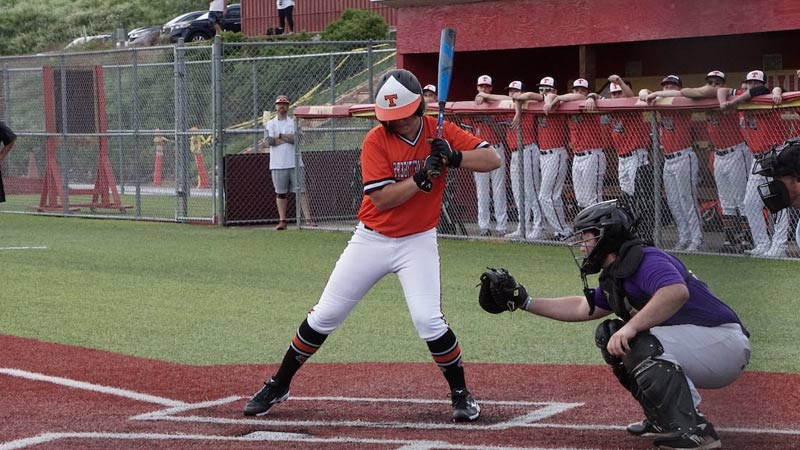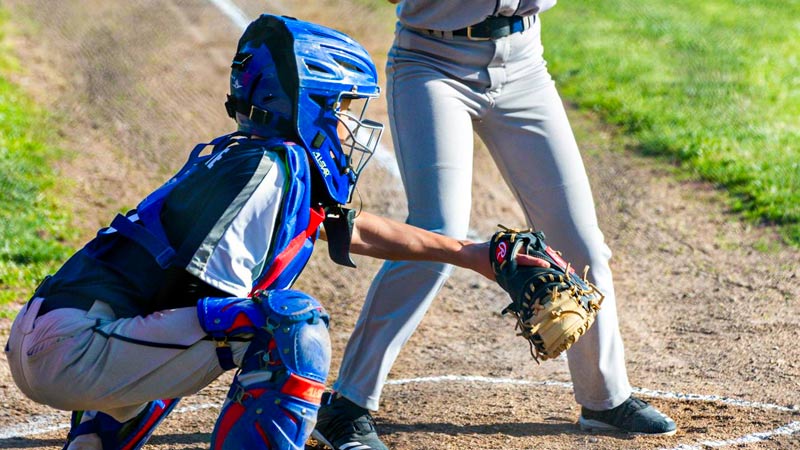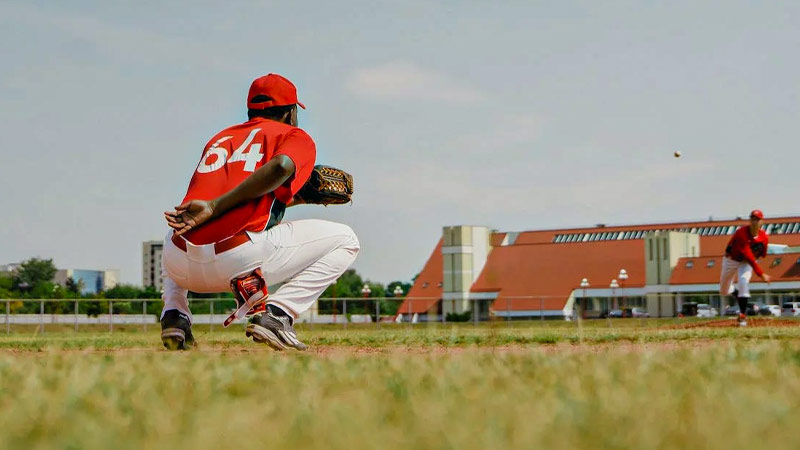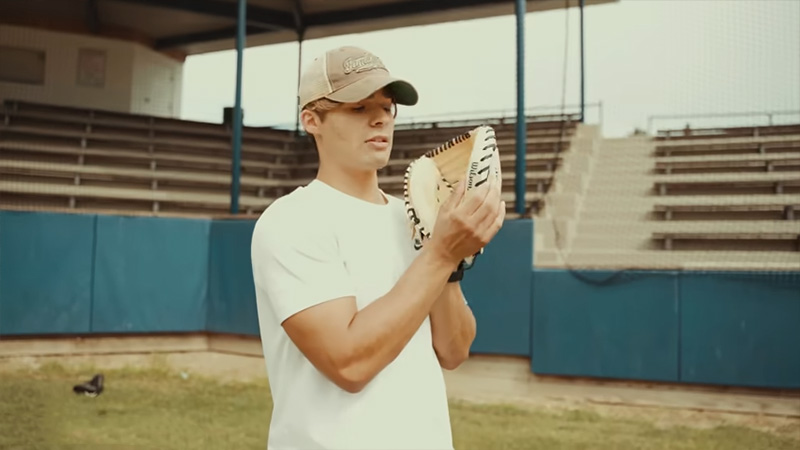In the world of high school baseball, every piece of equipment plays a pivotal role in a player’s performance. When it comes to catchers, selecting the right mitt size is a critical decision.
A well-fitted catcher’s mitt can make the difference between a game-changing play and a missed opportunity. But with mitts ranging from 32.5 to 34.5 inches, how do you find the perfect size for your high school athlete?
In this blog post, we’ll delve into what size catchers mitt for high school baseball.
We’ll explore the factors that influence this decision, from the player’s hand size to their catching style, and we’ll discuss the nuances of smaller versus larger mitts.
By the end, you’ll have a comprehensive understanding of what it takes to make an informed choice, ensuring that your high school catcher feels confident and secure behind the plate. Stay sharp.
What Size Catchers Mitt for High School Baseball?
When selecting a catcher’s mitt for high school baseball, it’s crucial to find the right size to ensure optimal performance and comfort.
The standard size for high school catchers is typically around 32.5 to 34.5 inches. However, the ideal size may vary based on the individual catcher’s preferences and physical attributes.
A mitt on the smaller end of this range, around 32.5 inches, is more maneuverable and can be advantageous for quick transfers and agility. It also tends to be lighter.
In contrast, a larger mitt, around 34.5 inches, offers a bigger target for pitchers and helps with pitch framing but may be heavier and slightly less maneuverable.
The right size depends on the catcher’s catching style, hand size, and personal preference.
It’s essential to try out different sizes and models to find the perfect fit, ensuring that the catcher feels confident and secure behind the plate, ready to handle the fast-paced game of high school baseball.
The Basics of the Highschool Catchers Mitt Size

Check some of the basic aspects of the high school catcher Mitt size in the next section below;
Standard Size Range
The typical size range for a high school catcher’s mitt is between 32.5 to 34.5 inches.
This range is designed to accommodate the needs of most high school catchers, but the specific size within this range can vary based on personal preferences and requirements.
Smaller Mitts (e.g., 32.5 inches)
Smaller catcher’s mitts are more maneuverable, making them beneficial for catchers who need to quickly transfer the ball to throw out base runners.
These mitts are often lighter and allow for greater agility, which can be advantageous when receiving and making rapid plays.
Larger Mitts (e.g., 34.5 inches)
Larger mitts offer a bigger target for pitchers and can help with pitch framing, making them a popular choice for high school catchers looking to boost their pitcher’s performance.
However, they may be slightly heavier and less maneuverable, so catchers must consider their physical strength and playing style.
Personal Preference
Selecting the right size is highly individual. Catchers should consider their hand size, catching style, and comfort when choosing a mitt.
It’s essential to try out different sizes and models to determine what feels most secure and effective behind the plate, allowing catchers to confidently handle the demands of high school baseball.
Catcher Mitt Size Chart
A catcher mitt size chart can serve as a helpful reference for catchers to find the most suitable mitt based on their preferences and playing needs.
Here are some key points to include in such a chart:
Size Range
The chart should list the various sizes available, typically ranging from 32.5 inches to 34.5 inches. Each size should be associated with its specific characteristics and recommended use.
Characteristics
Describe the characteristics of catcher mitts in each size category. For instance, smaller mitts (e.g., 32.5 inches) are more maneuverable and lighter, making them suitable for quick transfers and agility.
In contrast, larger mitts (e.g., 34.5 inches) offer a bigger target and are preferred for pitch framing.
Player Preferences

Include guidance on the factors players should consider when choosing a mitt size.
Mention that personal preference, hand size, catching style, and the player’s physical strength all play a role in determining the best size.
Recommended Usage
Provide recommendations for when each size is most advantageous.
Smaller mitts may be ideal for catchers who prioritize agility and quick plays, while larger mitts can benefit those looking to enhance pitch framing and provide a larger target for pitchers.
Try Before Buying
Emphasize the importance of trying out different mitt sizes to find the one that feels most comfortable and secure. A mitt should enable the catcher to confidently handle the rigors of high school baseball.
33 Vs 34 Catchers Mitt
Choosing between a 33-inch and a 34-inch catcher’s mitt can significantly impact a catcher’s performance.
Here are some points to consider when deciding between the two:
Size and Target Area
A 34-inch mitt provides a larger target area for pitchers compared to a 33-inch mitt. This can make it easier for pitchers to hit their spots and improve the catcher’s ability to receive pitches effectively.
However, a 33-inch mitt is still an adequate size for high school catchers and can offer more maneuverability for quick transfers and agility.
Agility vs. Pitch Framing
Catchers opting for a 33-inch mitt may prioritize agility and rapid plays. Smaller mitts are lighter and more maneuverable, enabling quicker transfers to throw out base runners.
On the other hand, a 34-inch mitt is better suited for enhancing pitch framing, providing a larger, more visible target for the pitcher.
Personal Preference
The choice between a 33-inch and a 34-inch mitt often comes down to personal preference.
Catchers should consider their catching style, hand size, and comfort. Some may feel more secure with the larger mitt, while others may prefer the increased agility of a smaller mitt.
Pitcher-Catcher Relationship
The size of the mitt can impact the relationship between the catcher and pitcher. If the pitcher is more comfortable with a larger mitt, it might lead to better communication and trust.
It’s essential for the catcher to discuss preferences with the pitchers they’ll be working with.
Game Strategy
Game strategy can also influence the choice. A team that relies on strong pitch framing and control may opt for a 34-inch mitt, while a team emphasizing agility and quick throws may lean toward a 33-inch mitt.
The mitt size should align with the team’s overall game plan and the catcher’s role in it.
High School Regulations for Catchers Mitt Sizes

High school baseball regulations for catcher’s mitt sizes are typically set by governing bodies, such as the National Federation of State High School Associations (NFHS).
These regulations are in place to maintain fairness and consistency in the sport. Here are some key points regarding high school regulations for catcher’s mitt sizes:
NFHS Guidelines
High school baseball in the United States often follows the regulations set by the NFHS. According to NFHS rules, catcher’s mitts must not exceed 35 inches in circumference or be longer than 38 inches.
These dimensions ensure that catchers mitts are not overly large, promoting fair play and consistent standards across different teams and regions.
Measuring Compliance
Umpires or officials often check catcher’s mitts for compliance with NFHS regulations before the game begins.
This includes measuring the circumference and length of the mitt to ensure it falls within the allowable limits.
If a mitt is found to be oversized, the catcher may be required to switch to an appropriate-sized mitt.
Player Safety
Limiting the size of catcher’s mitts also serves as a safety measure.
Overly large mitts could potentially obstruct the pitcher’s view or pose a hazard to the batter or fielders, and by imposing size limits, these concerns are addressed.
Consistency and Fairness
By adhering to standardized mitt sizes, high school baseball leagues promote a level playing field.
Catchers from different teams are expected to use mitts of similar sizes, preventing any unfair advantage due to mitt dimensions. This consistency in equipment contributes to the integrity of the game.
Adherence to Rulebook
Coaches, players, and officials should familiarize themselves with the specific rules and regulations outlined in the NFHS rulebook or their respective governing body’s guidelines.
Ensuring that all equipment, including catcher’s mitts, complies with these rules is essential to avoid penalties and disruptions during games.
FAQs
What size catcher’s mitt is good?
The ideal size for a catcher’s mitt varies based on personal preference and playing style. In high school, mitts typically range from 32.5 to 34.5 inches, but the best size depends on the catcher’s comfort and needs.
What size catcher’s mitt for 13 year old?
For a 13-year-old catcher, a mitt in the range of 32.5 to 33.5 inches is generally suitable.
However, it’s essential to consider the player’s hand size, catching style, and comfort when selecting the right size to ensure a secure fit and efficient performance.
What’s the difference between a 32.5-inch and a 34.5-inch catcher’s mitt?
The main difference is size. A 32.5-inch mitt is smaller, offering more agility for quick plays, while a 34.5-inch mitt is larger, providing a bigger target for pitchers and enhancing pitch framing.
The choice depends on the catcher’s style and preferences.
Is there a standard catcher’s mitt size for high school baseball?
High school baseball often follows the NFHS guidelines, which typically allow catcher’s mitts with a circumference of up to 35 inches and a length of no more than 38 inches.
However, the best size can vary based on the catcher’s individual needs and comfort.
How can I determine the right catcher’s mitt size for my high school baseball player?
To find the right size, consider the player’s hand size, catching style, and personal comfort.
Try different mitt sizes and models to see which one feels secure and enables confident play behind the plate. It’s crucial to balance maneuverability and target size for an effective performance.
Wrapping Up
Selecting the right catcher’s mitt size for high school baseball is a decision that should not be taken lightly.
As we’ve explored in this blog post, it’s not just about following standard guidelines but tailoring the choice to the individual player’s needs and preferences.
A mitt that feels secure and comfortable can significantly impact a catcher’s performance and confidence on the field.
Whether it’s a smaller, more maneuverable mitt for quick transfers and agility or a larger mitt to aid in pitch framing, the key is to find that perfect balance.
By considering hand size, catching style, and personal comfort, you can make an informed choice that ensures your high school athlete is well-equipped to handle the fast-paced and demanding game of high school baseball.
So, go ahead, explore the options, try different sizes, and watch your catcher shine behind the plate. Best of luck.







